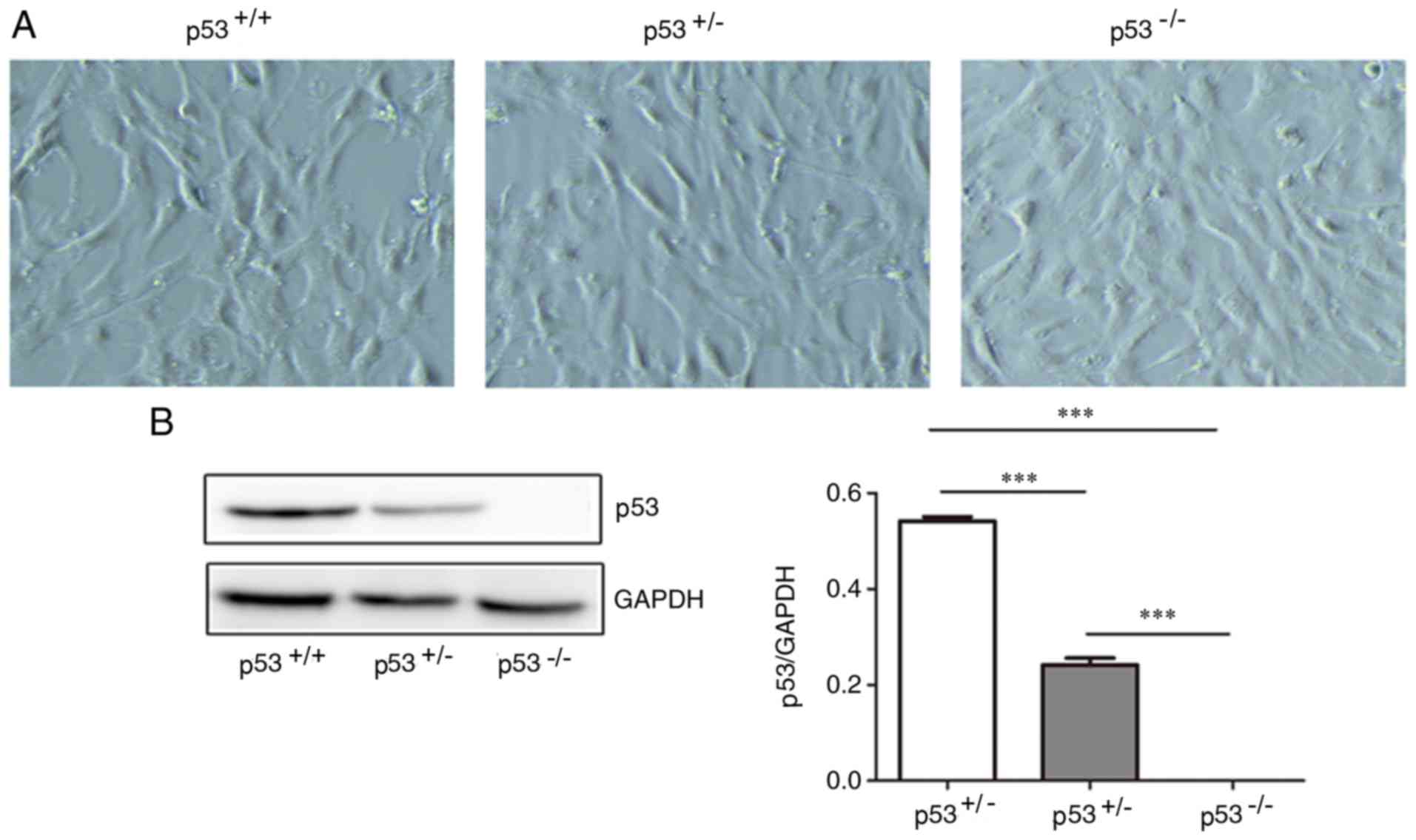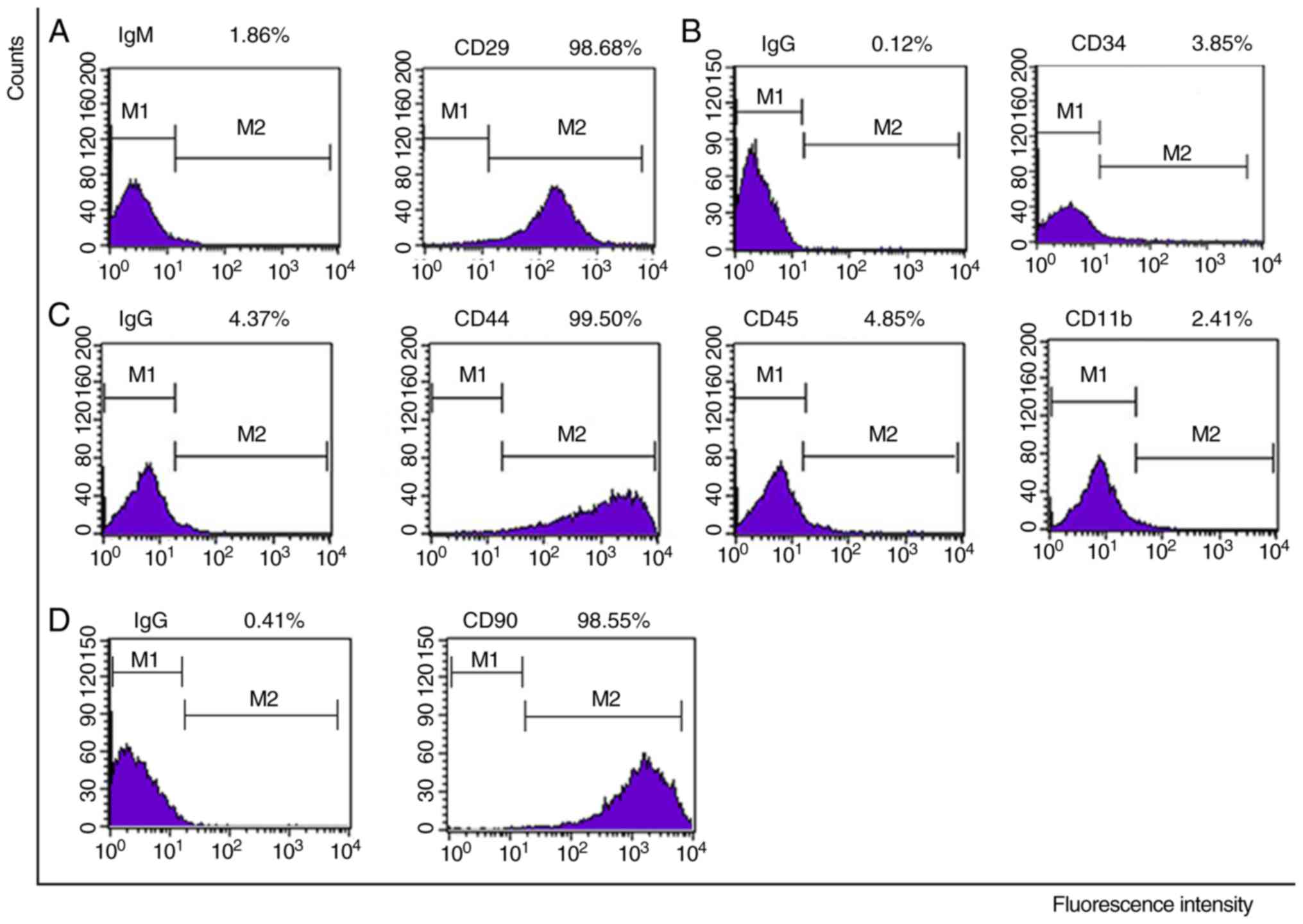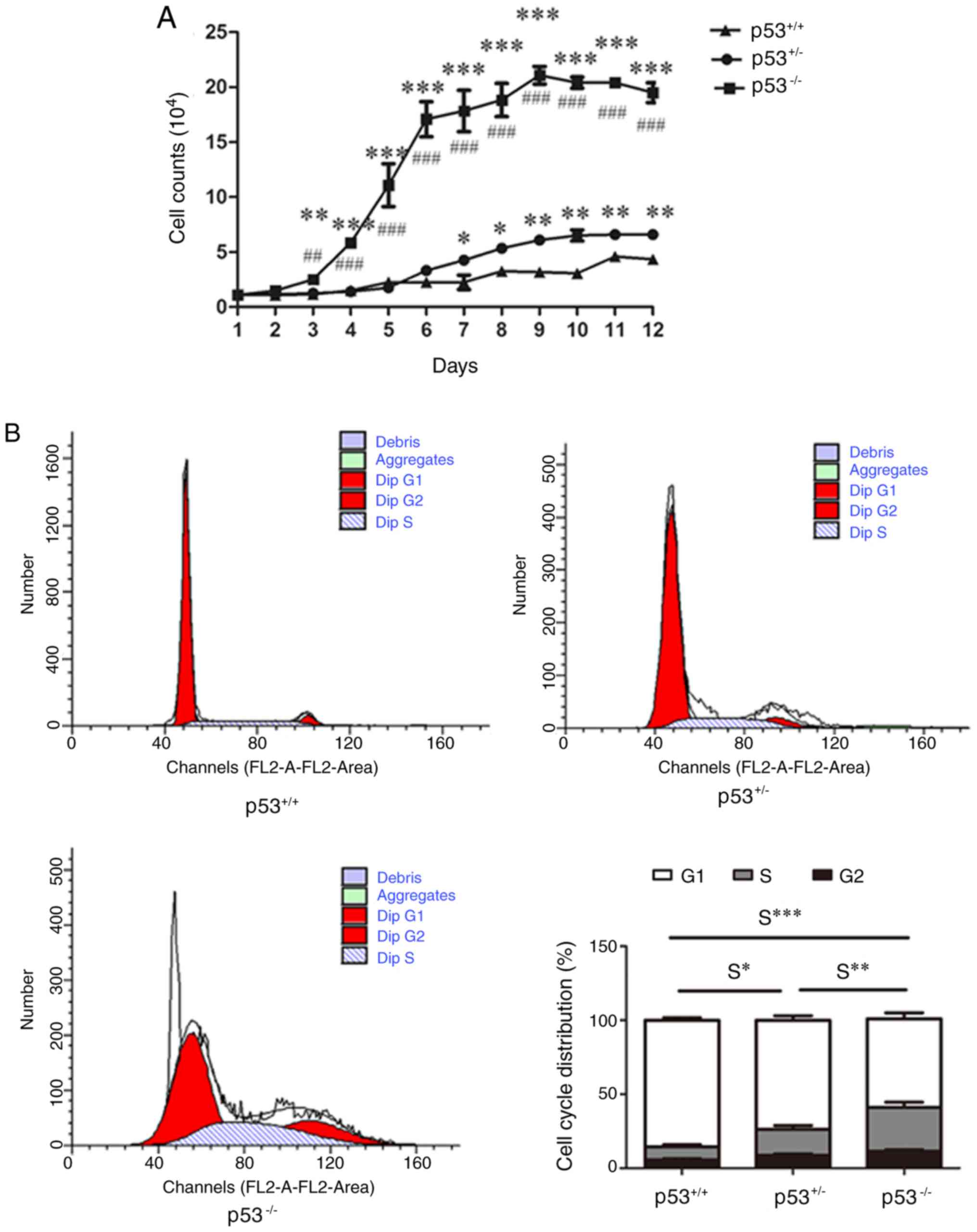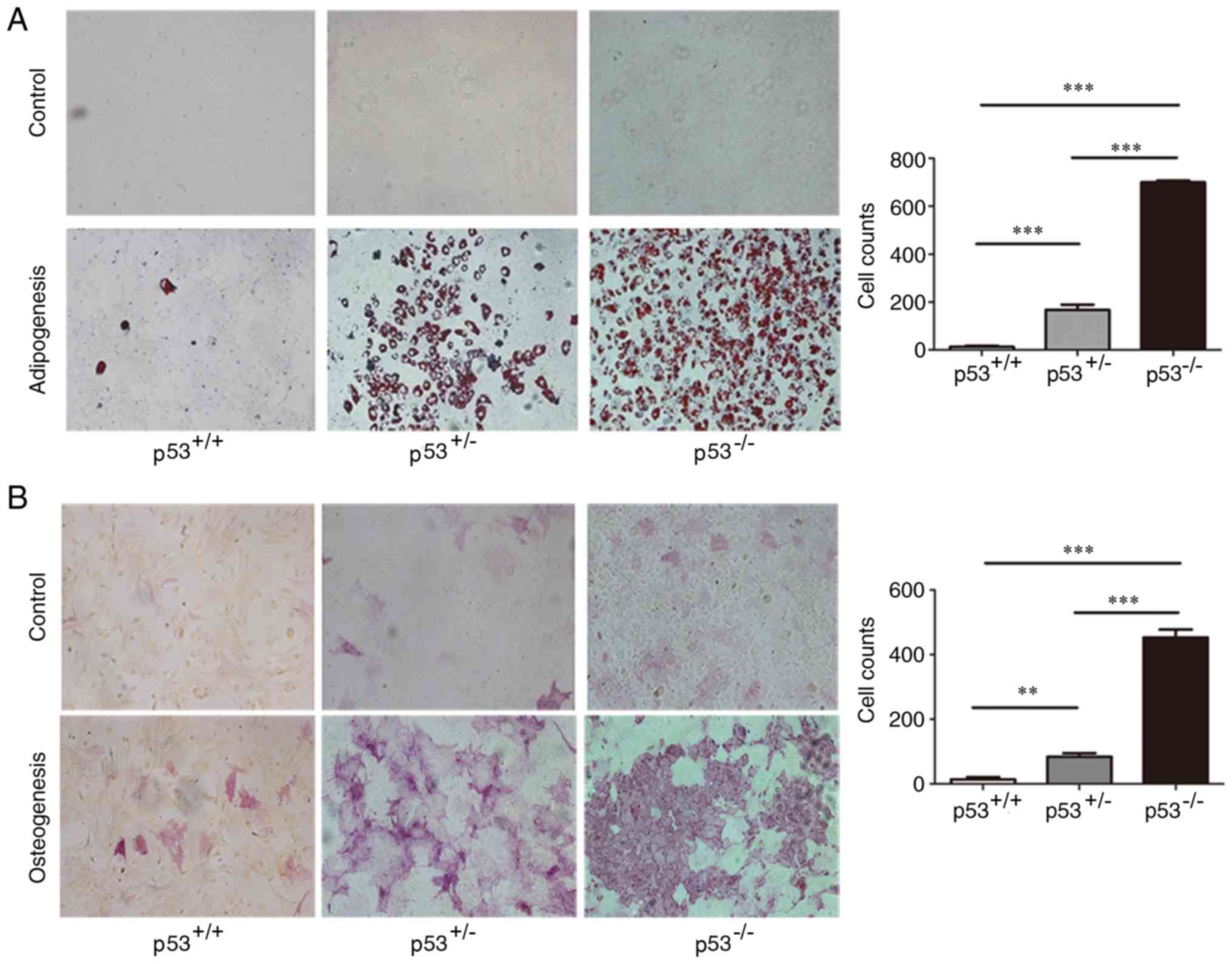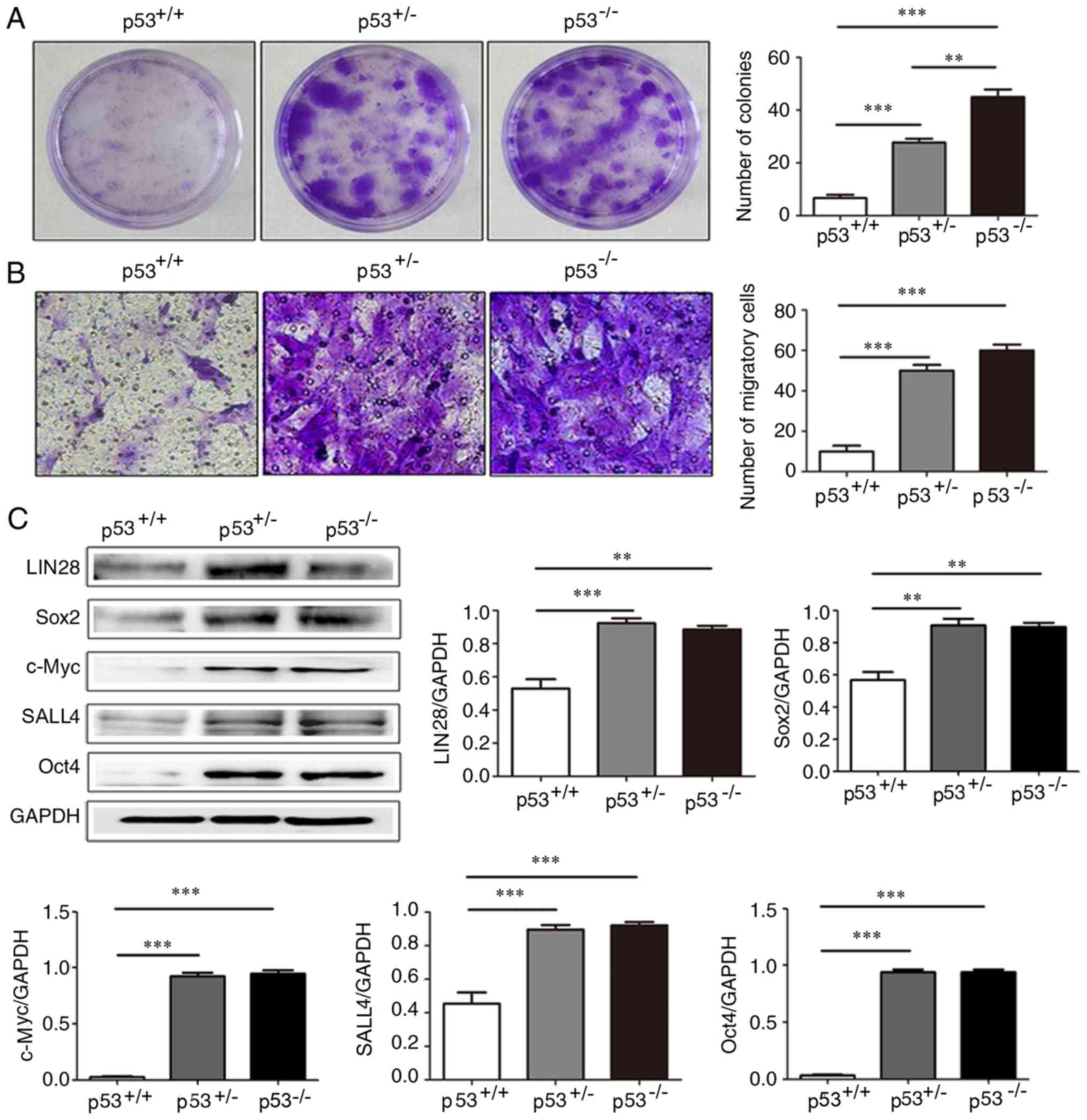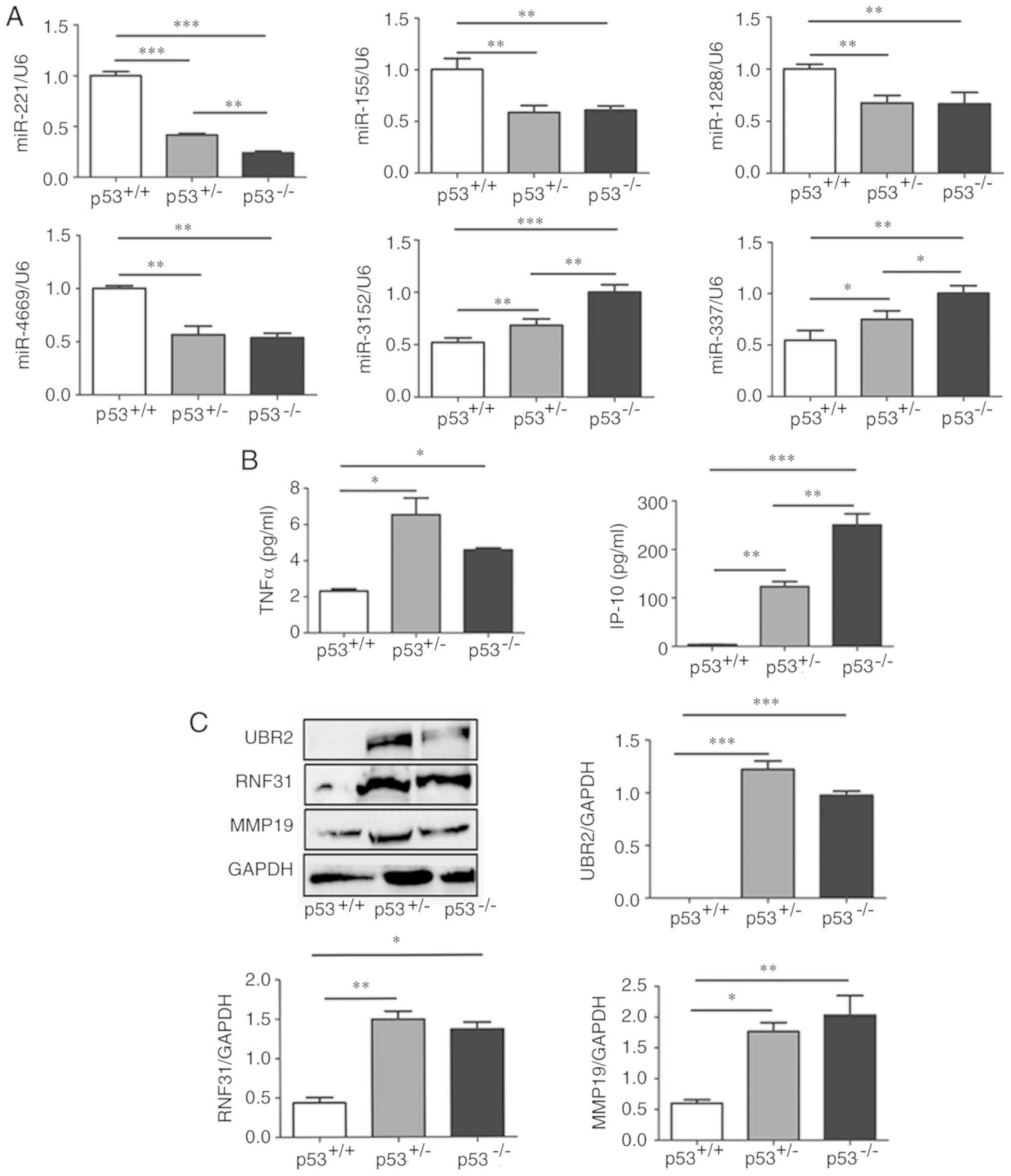|
1
|
Frausin S, Viventi S, Verga Falzacappa L,
Quattromani MJ, Leanza G, Tommasini A and Valencic E: Wharton's
jelly derived mesenchymal stromal cells: Biological properties,
induction of neuronal phenotype and current applications in
neurodegeneration research. Acta Histochem. 117:329–338. 2015.
View Article : Google Scholar : PubMed/NCBI
|
|
2
|
Iser IC, Bracco PA, Gonçalves CE, Zanin
RF, Nardi NB, Lenz G, Battastini AM and Wink MR: Mesenchymal stem
cells from different murine tissues have differential capacity to
metabolize extracellular nucleotides. J Cell Biochem.
115:1673–1682. 2014. View Article : Google Scholar : PubMed/NCBI
|
|
3
|
Jung J, Choi JH, Lee Y, Park JW, Oh IH,
Hwang SG, Kim KS and Kim GJ: Human placenta-derived mesenchymal
stem cells promote hepatic regeneration in CCl4-injured rat liver
model via increased autophagic mechanism. Stem Cells. 31:1584–1596.
2013. View Article : Google Scholar : PubMed/NCBI
|
|
4
|
Pittenger MF, Mackay AM, Beck SC, Jaiswal
RK, Douglas R, Mosca JD, Moorman MA, Simonetti DW, Craig S and
Marshak DR: Multilineage potential of adult human mesenchymal stem
cells. Science. 284:143–147. 1999. View Article : Google Scholar : PubMed/NCBI
|
|
5
|
Sargent A and Miller RH: MSC therapeutics
in chronic inflammation. Curr Stem Cell Rep. 2:168–173. 2016.
View Article : Google Scholar : PubMed/NCBI
|
|
6
|
Huang F, Wang M, Yang T, Cai J, Zhang Q,
Sun Z, Wu X, Zhang X, Zhu W, Qian H and Xu W: Gastric
cancer-derived MSC-secreted PDGF-DD promotes gastric cancer
progression. J Cancer Res Clin Oncol. 140:1835–1848. 2014.
View Article : Google Scholar : PubMed/NCBI
|
|
7
|
Homma A, Nakamura K, Matsuura K, Mizusawa
J, Onimaru R, Fukuda H and Fujii M: Dose-finding and efficacy
confirmation trial of superselective intra-arterial infusion of
cisplatin and concomitant radiotherapy for patients with locally
advanced maxillary sinus cancer (JCOG1212, RADPLAT-MSC). Jpn J Clin
Oncol. 45:119–122. 2015. View Article : Google Scholar : PubMed/NCBI
|
|
8
|
Cuiffo BG, Campagne A, Bell GW, Lembo A,
Orso F, Lien EC, Bhasin MK, Raimo M, Hanson SE, Marusyk A, et al:
MSC-regulated microRNAs converge on the transcription factor FOXP2
and promote breast cancer metastasis. Cell Stem Cell. 15:762–774.
2014. View Article : Google Scholar : PubMed/NCBI
|
|
9
|
da Costa Gonçalves F, Grings M, Nunes NS,
Pinto FO, Garcez TN, Visioli F, Leipnitz G and Paz AH: Antioxidant
properties of mesenchymal stem cells against oxidative stress in a
murine model of colitis. Biotechnol Lett. 39:613–622. 2017.
View Article : Google Scholar : PubMed/NCBI
|
|
10
|
Ansboro S, Roelofs AJ and De Bari C:
Mesenchymal stem cells for the management of rheumatoid arthritis:
Immune modulation, repair or both? Curr Opin Rheumatol. 29:201–207.
2017. View Article : Google Scholar : PubMed/NCBI
|
|
11
|
Nair BC, Krishnan SR, Sareddy GR, Mann M,
Xu B, Natarajan M, Hasty P, Brann D, Tekmal RR and Vadlamudi RK:
Proline, glutamic acid and leucine-rich protein-1 is essential for
optimal p53-mediated DNA damage response. Cell Death Differ.
21:1409–1418. 2014. View Article : Google Scholar : PubMed/NCBI
|
|
12
|
Shi Y, Du L, Lin L and Wang Y:
Tumour-associated mesenchymal stem/stromal cells: Emerging
therapeutic targets. Nat Rev Drug Discov. 16:35–52. 2017.
View Article : Google Scholar : PubMed/NCBI
|
|
13
|
Tu B, Zhu J, Liu S, Wang L, Fan Q, Hao Y,
Fan C and Tang TT: Mesenchymal stem cells promote osteosarcoma cell
survival and drug resistance through activation of STAT3.
Oncotarget. 7:48296–48308. 2016. View Article : Google Scholar : PubMed/NCBI
|
|
14
|
Zhu M, Wang M, Yang F, Tian Y, Cai J, Yang
H, Fu H, Mao F, Zhu W, Qian H and Xu W: miR-155-5p inhibition
promotes the transition of bone marrow mesenchymal stem cells to
gastric cancer tissue derived MSC-like cells via NF-κB p65
activation. Oncotarget. 7:16567–16580. 2016.PubMed/NCBI
|
|
15
|
O'Malley G, Heijltjes M, Houston AM, Rani
S, Ritter T, Egan LJ and Ryan AE: Mesenchymal stromal cells (MSCs)
and colorectal cancer: A troublesome twosome for the anti-tumour
immune response? Oncotarget. 7:60752–60774. 2016.PubMed/NCBI
|
|
16
|
Zhang M, Gao CE, Li WH, Yang Y, Chang L,
Dong J, Ren YX and Chen D: Microarray based analysis of gene
regulation by mesenchymal stem cells in breast cancer. Oncol Lett.
13:2770–2776. 2017. View Article : Google Scholar : PubMed/NCBI
|
|
17
|
Li N, Xie C and Lu NH: p53, a potential
predictor of Helicobacter pylori infection-associated gastric
carcinogenesis? Oncotarget. 7:66276–66286. 2016.PubMed/NCBI
|
|
18
|
Berkers CR, Maddocks OD, Cheung EC, Mor I
and Vousden KH: Metabolic regulation by p53 family members. Cell
Metab. 18:617–633. 2013. View Article : Google Scholar : PubMed/NCBI
|
|
19
|
Quintas-Cardama A, Hu C, Qutub A, Qiu YH,
Zhang X, Post SM, Zhang N, Coombes K and Kornblau SM: p53 pathway
dysfunction is highly prevalent in acute myeloid leukemia
independent of TP53 mutational status. Leukemia. 31:1296–1305.
2017. View Article : Google Scholar : PubMed/NCBI
|
|
20
|
Wang XJ, L Jeffrey Medeiros, Bueso-Ramos
CE, Tang G, Wang S, Oki Y, Desai P, Khoury JD, Miranda RN, Tang Z,
et al: P53 expression correlates with poorer survival and augments
the negative prognostic effect of MYC rearrangement, expression or
concurrent MYC/BCL2 expression in diffuse large B-cell lymphoma.
Mod Pathol. 30:194–203. 2017. View Article : Google Scholar : PubMed/NCBI
|
|
21
|
Tataria M, Quarto N, Longaker MT and
Sylvester KG: Absence of the p53 tumor suppressor gene promotes
osteogenesis in mesenchymal stem cells. J Pediatr Surg. 41:624–632.
2006. View Article : Google Scholar : PubMed/NCBI
|
|
22
|
He Y, de Castro LF, Shin MH, Dubois W,
Yang HH, Jiang S, Mishra PJ, Ren L, Gou H, Lal A, et al: p53 loss
increases the osteogenic differentiation of bone marrow stromal
cells. Stem Cells. 33:1304–1319. 2015. View Article : Google Scholar : PubMed/NCBI
|
|
23
|
Armesilla-Diaz A, Elvira G and Silva A:
p53 regulates the proliferation, differentiation and spontaneous
transformation of mesenchymal stem cells. Exp Cell Res.
315:3598–3610. 2009. View Article : Google Scholar : PubMed/NCBI
|
|
24
|
Boregowda SV, Krishnappa V, Strivelli J,
Haga CL, Booker CN and Phinney DG: Basal p53 expression is
indispensable for mesenchymal stem cell integrity. Cell Death
Differ. 25:677–690. 2018. View Article : Google Scholar :
|
|
25
|
Huang Y, Yu P, Li W, Ren G, Roberts AI,
Cao W, Zhang X, Su J, Chen X, Chen Q, et al: p53 regulates
mesenchymal stem cell-mediated tumor suppression in a tumor
microenvironment through immune modulation. Oncogene. 33:3830–3838.
2014. View Article : Google Scholar : PubMed/NCBI
|
|
26
|
Patocs A, Zhang L, Xu Y, Weber F, Caldes
T, Mutter GL, Platzer P and Eng C: Breast-cancer stromal cells with
TP53 mutations and nodal metastases. N Engl J Med. 357:2543–2551.
2007. View Article : Google Scholar : PubMed/NCBI
|
|
27
|
Livak JK and Schmittgen TD: Analysis of
relative gene expression data using quantitative PCR and the
2(-Delta Delta C(T)) method. Methods. 25:402–408. 2001. View Article : Google Scholar : PubMed/NCBI
|
|
28
|
Slotta-Huspenina J, Drecoll E, Feith M,
Habermehl D, Combs S, Weichert W, Bettstetter M, Becker K and
Langer R: MicroRNA expression profiling for the prediction of
resistance to neoadjuvant radiochemotherapy in squamous cell
carcinoma of the esophagus. J Transl Med. 16:1092018. View Article : Google Scholar : PubMed/NCBI
|
|
29
|
Wu H, Liu HY, Liu WJ, Shi YL and Bao D:
miR-377-5p inhibits lung cancer cell proliferation, invasion, and
cell cycle progression by targeting AKT1 signaling. J Cell Biochem.
Nov 28–2018.doi: 10.1002/jcb.28091 (Epub ahead of print).
|
|
30
|
Wang CQ, Chen L, Dong CL, Song Y, Shen ZP,
Shen WM and Wu XD: MiR-377 suppresses cell proliferation and
metastasis in gastric cancer via repressing the expression of
VEGFA. Eur Rev Med Pharmacol Sci. 21:5101–5111. 2017.PubMed/NCBI
|
|
31
|
EI Baroudi M, Machiels JP and Schmitz S:
Expression of SESN1, UHRF1BP1, and miR-377-3p as prognostic markers
in mutated TP53 squamous cell carcinoma of the head and neck.
Cancer Biol Ther. 18:775–782. 2017. View Article : Google Scholar : PubMed/NCBI
|
|
32
|
Liu WY, Yang Z, Sun Q, Yang X, Hu Y, Xie
H, Gao HJ, Guo LM, Yi JY, Liu M and Tang H: miR-377-3p drives
malignancy characteristics via upregulating GSK-3β expression and
activating NF-κB pathway in hCRC cells. J Cell Biochem.
119:2124–2134. 2018. View Article : Google Scholar : PubMed/NCBI
|
|
33
|
Hu XH, Zhao ZX, Dai J, Geng DC and Xu YZ:
MicroRNA-221 regulates osteosarcoma cell proliferation, apoptosis,
migration, and invasion by targeting CDKN1B/p27. J Cell Biochem.
120:4665–4674. 2019. View Article : Google Scholar : PubMed/NCBI
|
|
34
|
Feng Y, Bai F, You Y, Bai F, Wu C, Xin R,
Li X and Nie Y: Dysregulated microRNA expression profiles in
gastric cancer cells with high peritoneal metastatic potential. Exp
Ther Med. 16:4602–4608. 2018.PubMed/NCBI
|
|
35
|
DiSano JA, Huffnagle I, Gowda R,
Spiegelman VS, Robertson GP and Pameijer CR: Loss of miR-155
upregulates WEE1 in metastatic melanoma. Melanoma Res. 29:216–219.
2019. View Article : Google Scholar : PubMed/NCBI
|
|
36
|
Witten LW, Cheng CJ and Slack FJ: miR-155
drives oncogenesis by promoting and cooperating with mutations in
the c-Kit oncogene. Oncogene. 38:2151–2161. 2019. View Article : Google Scholar : PubMed/NCBI
|
|
37
|
Gopalan V, Pillai S, Ebrahimi F,
Salajegheh A, Lam TC, Le TK, Langsford N, Ho YH, Smith RA and Lam
AK: Regulation of microRNA-1288 in colorectal cancer: Altered
expression and its clinicopathological significance. Mol Carcinog.
53 (Suppl 1):E36–E44. 2014. View Article : Google Scholar : PubMed/NCBI
|
|
38
|
Gopalan V, Islam F, Pillai S, Tang JC,
Tong DK, Law S, Chan KW and Lam AK: Overexpression of microRNA-1288
in oesophageal squamous cell carcinoma. Exp Cell Res. 348:146–154.
2016. View Article : Google Scholar : PubMed/NCBI
|
|
39
|
Wang YN, Chen ZH and Chen WC: Novel
circulating microRNAs expression profile in colon cancer: A pilot
study. Eur J Med Res. 22:512017. View Article : Google Scholar : PubMed/NCBI
|
|
40
|
Zhang B, Shi Y, Gong A, Pan Z, Shi H, Yang
H, Fu H, Yan Y, Zhang X, Wang M, et al: HucMSC Exosome-delivered
14-3-3ζ orchestrates self-control of the Wnt response via
modulation of YAP during cutaneous regeneration. Stem Cells.
34:2485–2500. 2016. View Article : Google Scholar : PubMed/NCBI
|
|
41
|
Mao J, Liang Z, Zhang B, Yang H, Li X, Fu
H, Zhang X, Yan Y, Xu W and Qian H: UBR2 Enriched in p53 deficient
mouse bone marrow mesenchymal stem Cell-Exosome promoted gastric
cancer progression via Wnt/β-catenin pathway. Stem Cells.
35:2267–2279. 2017. View Article : Google Scholar : PubMed/NCBI
|
|
42
|
Zhu J, Zhuang T, Yang H, Li X, Liu H and
Wang H: Atypical ubiquitin ligase RNF31: The nuclear factor
modulator in breast cancer progression. BMC Cancer. 16:5382016.
View Article : Google Scholar : PubMed/NCBI
|
|
43
|
Müller M, Beck IM, Gadesmann J, Karschuk
N, Paschen A, Proksch E, Djonov V, Reiss K and Sedlacek R: MMP19 is
upregulated during melanoma progression and increases invasion of
melanoma cells. Mod Pathol. 23:511–521. 2010. View Article : Google Scholar : PubMed/NCBI
|
|
44
|
Sineh Sepehr K, Razavi A, Saeidi M,
Mossahebi-Mohammadi M, Abdollahpour-Alitappeh M and Hashemi SM:
Development of a novel explant culture method for the isolation of
mesenchymal stem cells from human breast tumor. J Immunoassay
Immunochem. 39:207–217. 2018. View Article : Google Scholar : PubMed/NCBI
|
|
45
|
Kang R, Zhou Y, Tan S, Zhou G, Aagaard L,
Xie L, Bünger C, Bolund L and Luo Y: Mesenchymal stem cells derived
from human induced pluripotent stem cells retain adequate
osteogenicity and chondrogenicity but less adipogenicity. Stem Cell
Res Ther. 6:1442015. View Article : Google Scholar : PubMed/NCBI
|
|
46
|
Li XF, Xu BZ and Wang SZ: Aspirin inhibits
the proliferation and migration of gastric cancer cells in
p53-knockout mice. Oncol Lett. 12:3183–3186. 2016. View Article : Google Scholar : PubMed/NCBI
|
|
47
|
Donehower LA and Lozano G: 20 years
studying p53 functions in genetically engineered mice. Nat Rev
Cancer. 9:831–841. 2009. View Article : Google Scholar : PubMed/NCBI
|
|
48
|
Zhang Y, Dube C, Gibert M Jr, Cruickshanks
N, Wang B, Coughlan M, Yang Y, Setiady I, Deveau C, Saoud K, et al:
The p53 pathway in Glioblastoma. Cancers (Basel). 10(pii):
E2972018. View Article : Google Scholar : PubMed/NCBI
|
|
49
|
Ren D, Wang M, Guo W, Zhao X, Tu X, Huang
S, Zou X and Peng X: Wild-type p53 suppresses the
epithelial-mesenchymal transition and stemness in PC-3 prostate
cancer cells by modulating miR-145. Int J Oncol. 42:1473–1481.
2013. View Article : Google Scholar : PubMed/NCBI
|
|
50
|
Tarasov V, Jung P, Verdoodt B, Lodygin D,
Epanchintsev A, Menssen A, Meister G and Hermeking H: Differential
regulation of microRNAs by p53 revealed by massively parallel
sequencing: MiR-34a is a p53 target that induces apoptosis and
G1-arrest. Cell Cycle. 6:1586–1593. 2007. View Article : Google Scholar : PubMed/NCBI
|
|
51
|
Cortez MA, Ivan C, Valdecanas D, Wang X,
Peltier HJ, Ye Y, Araujo L, Carbone DP, Shilo K, Giri DK, et al:
PDL1 Regulation by p53 via miR-34. J Natl Cancer Inst. 108(pii):
djv3032015.PubMed/NCBI
|
|
52
|
Sachdeva M, Zhu S, Wu F, Wu H, Walia V,
Kumar S, Elble R, Watabe K and Mo YY: p53 represses c-Myc through
induction of the tumor suppressor miR-145. Proc Natl Acad Sci USA.
106:3207–3212. 2009. View Article : Google Scholar : PubMed/NCBI
|
|
53
|
Chang CJ, Chao CH, Xia W, Yang JY, Xiong
Y, Li CW, Yu WH, Rehman SK, Hsu JL, Lee HH, et al: p53 regulates
epithelial-mesenchymal transition and stem cell properties through
modulating miRNAs. Nat Cell Biol. 13:317–323. View Article : Google Scholar : PubMed/NCBI
|
|
54
|
Wang M, Zhao C, Shi H, Zhang B, Zhang L,
Zhang X, Wang S, Wu X, Yang T, Huang F, et al: Deregulated
microRNAs in gastric cancer tissue-derived mesenchymal stem cells:
Novel biomarkers and a mechanism for gastric cancer. Br J Cancer.
110:1199–1210. 2014. View Article : Google Scholar : PubMed/NCBI
|
|
55
|
Chan JK and Lam PY: Human mesenchymal stem
cells and their paracrine factors for the treatment of brain
tumors. Cancer Gene Ther. 20:539–543. 2013. View Article : Google Scholar : PubMed/NCBI
|
|
56
|
Zhou X, Li Z and Zhou J: Tumor necrosis
factor α in the onset and progression of leukemia. Exp Hematol.
45:17–26. 2017. View Article : Google Scholar : PubMed/NCBI
|
|
57
|
Cao Y, Luetkens T, Kobold S, Hildebrandt
Y, Gordic M, Lajmi N, Meyer S, Bartels K, Zander AR, Bokemeyer C,
et al: The cytokine/chemokine pattern in the bone marrow
environment of multiple myeloma patients. Exp Hematol. 38:860–867.
2010. View Article : Google Scholar : PubMed/NCBI
|















